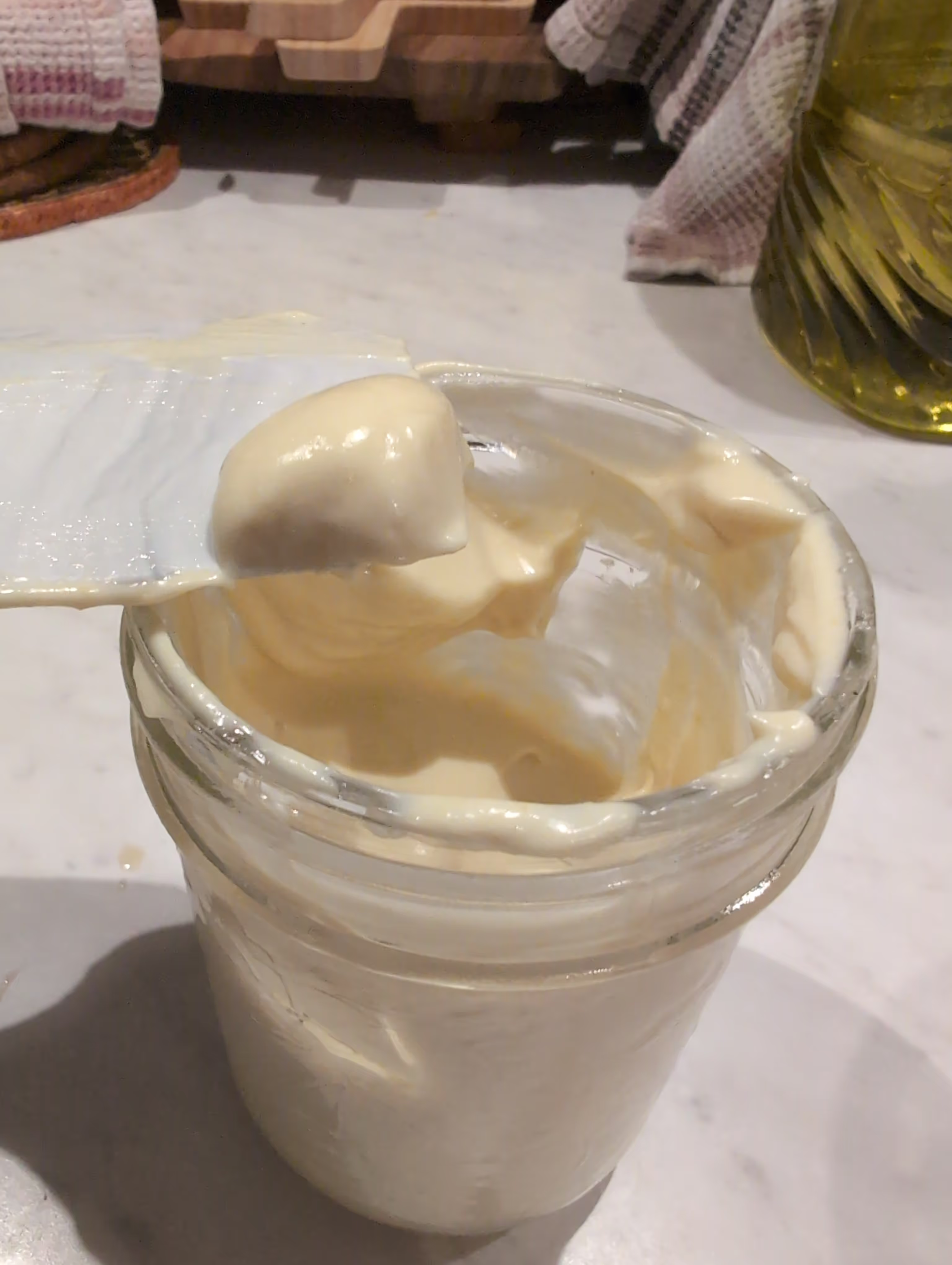Homemade mayonnaise, a work in progress

Homemade Mayonnaise
Homemade mayonnaise is surprisingly simple to make and delivers a flavor that store-bought versions simply can’t match. With just a few ingredients and some basic technique, you can create a silky, flavorful condiment perfect for sandwiches, dressings, fries and more.
How many times did I mess up the mayo, thinking it was hard to make but actually was ingredients that were the problem. The temperature, quality, and proportions of ingredients all play crucial roles in successful mayonnaise-making.
From Classic to Aquafaba
I have been able to make thick mayonnaise without eggs using a magical ingredient called aquafaba. This chickpea liquid transforms into a perfect emulsifier that creates creamy, delicious mayo that rivals traditional recipes.
The Immersion Blender Method: A Game Changer
The immersion blender has revolutionized how I make mayonnaise at home. What used to be a tedious arm workout with a whisk has become incredibly simple and nearly foolproof. With this method:
- You can add all ingredients (except oil) to a container at once
- The emulsion forms in under a minute
- The fail rate is dramatically lower than traditional methods
- You get consistently thick results every time
This method works beautifully for both traditional egg-based mayo and for aquafaba versions, making homemade mayonnaise accessible to even novice cooks.
Classic Homemade Mayonnaise
Ingredients
- 1 large egg yolk, at room temperature
- 1 tablespoon lemon juice
- 1 teaspoon Dijon mustard
- 1/4 teaspoon of sugar of choice (I use maple syrup)
- 1 cup of neutral oil (such as sunflower or canola)
- Salt to taste
Method
- In a bowl, whisk together the egg yolk, lemon juice, and mustard until well combined.
- Very slowly drizzle in the oil while whisking constantly. Begin with just drops, then a thin stream as the emulsion forms.
- Continue whisking until all oil is incorporated and the mayonnaise is thick and glossy.
- Season with salt to taste.
Aquafaba Mayonnaise (Vegan Option)
Note: This recipe is a work in progress but consistently produces a thick, creamy texture similar to traditional mayo!
Here’s the crucial breakthrough: To make aquafaba mayonnaise that is thick, you need to use thickened aquafaba instead of regular aquafaba, so basically, evaporated aquafaba! I will provide more details on that in a future post.
I have also made many mistakes with using the wrong plant-based milk such as oat and rice milk. If you want to try plant-based milk, you need to use soy milk (or other bean-based milks).
Ingredients
- 3 tablespoons aquafaba (liquid from cooked chickpeas)
- 1 teaspoon apple cider vinegar
- 1/2 teaspoon Dijon mustard
- 1/2 cup neutral oil
- Pinch of salt
Method
- In a tall container, combine the ingredients except oil.
- Using an immersion blender, pulse a few times to combine.
- With the blender running continuously, slowly drizzle in the oil in a thin stream.
- Continue blending until the mixture thickens substantially – this may take 2-3 minutes.
- Season with salt to taste.
Why Egg-Free Mayo Matters
Making mayonnaise without eggs offers several important benefits:
- Allergy-friendly: Safe alternative for the millions who suffer from egg allergies
- Food safety: Eliminates any risk of salmonella that can come from raw eggs
- Sustainability: Using aquafaba repurposes a liquid that might otherwise be discarded
- Dietary inclusivity: Perfect for vegans and those following plant-based diets
The remarkable emulsifying properties of aquafaba make it possible to achieve the same thick, creamy consistency that eggs provide, without compromising on texture or flavor.
Tips for Perfect Mayonnaise
- Temperature matters: Ingredients should be at room temperature for best emulsion.
- Patience is key: Add oil extremely slowly at the beginning.
- For extra flavor, customize your mayonnaise with minced garlic, herbs, or spices.
Store homemade mayonnaise in an airtight container in the refrigerator for up to one week (it won’t last as long as store bought mayonnaise without the extra preservatives).